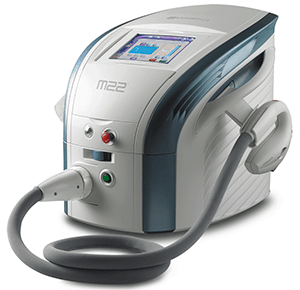Optima IPL Receives CFDA Mark Approval for Treatment of Dry Eye Disease
Now this exciting technology is available to practitioners in China for DED
September 10, 2019 – Yokne'am Illit, Israel

Lumenis Ltd., happy to announce that it has received CFDA Mark approval for commercial sales in China of its M22 Optima IPL for treatment of Dry Eye Disease using the M22 multi-application platform.
Lumenis Optima IPL is a first-of-its-kind, drug free-drop free, light-based treatment that targets chronic inflammation, which is the root cause of dry eye disease. Optima IPL breaks the dry eye vicious cycle
in multiple points. It alleviates the abnormal blood vessels1,2 as well as reduces the level of pro-inflammatory mediators3,4 and Demodex5 mites that perpetuate the disease and stimulate this vicious cycle. As such, it effectively restores tear film osmolarity6 and gland morphology7 to normal function, providing long lasting effect.
The CFDA is based on a randomized controlled trial of 120 MGD patients, treatment with Optima IPL significantly improved TBUT, symptoms (SPEED), meibum quality and lid margin abnormalities in the study arm compared to control8. This study joins multiple prospective studies, which have demonstrated that the Optima IPL improves both signs and symptoms of dry eye disease due to MGD.
As a technological leader in the eye care arena, Lumenis is dedicated to understanding the clinical aspects of the disease and the treatment and continues to invest in Dry Eye studies around the world.
China joins a long lists of countries around the world that have already approved the M22 Optima IPL treatment for dry eye disease, including the European Union (CE mark), Australia, New Zealand, South Korea, Brazil, Hong Kong, Poland and Ukraine.

References
- Kassir et al. (2011) J Cosmet Laser Ther 13(5):216-22
- Papageorgiou et al. (2008) Br J Dermatol 159(3):628-32
- Liu et al. (2017) Am J Ophthalmol 183:81-90
- Yin et al. (2018) Curr Eye Res 43(3):308-13
- Zhang et al. (2019) Current Eye Research 44:3,250-256.
- Dell et al. (2017) Clin Ophthalmol 11:817-827
- Rong et al. (2018) Photomed Laser Surg 36(6):326-332
- The results of this study, are currently in preparation for publication (internal ref: LUM-CHN-M22-16-01)
Explore Other Resources
PB-00033230 Rev A